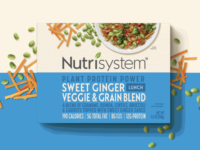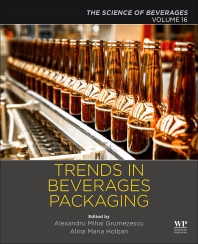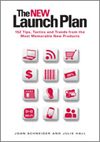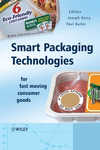Consumer behavior has undergone several changes in recent years. Some of these changes were driven by the global recession, some by the expansion of the Internet and others are a result of the increased emphasis on health and nutrition globally. This evolution of consumer behavior, however, has impacted the expectations from products on the retail shelf significantly. One big, yet subtle, difference that we have observed in recent years is the elevated role of packaging in communicating products’ value proposition and differentiating them on the shelf where they compete against a myriad of others like them. Where labels have and will continue to play a prominent role in reflecting manufacturers’ brands, packaging has taken on greater responsibility.
As a leading global player in the packaging industry, we have tremendously enjoyed responding to these shifts through our innovations in packaging and labeling technologies. Based on our experiences partnering closely with our clients as they look for new, creative solutions to meet their customers’ needs, here are a few trends to watch out for this year and beyond.
The Quest for Better Health & Convenience
Consumers are looking for healthier options coupled with the ability to quickly discern the nutritive benefits from the package and label. Items need to promote their natural ingredients, highlight nutritional benefits and allow consumers to get a holistic view of the product.
The need for speed is also important to many consumers. For on-the-go families, ready-to-eat food items, food that can be cooked in the package, and pre-packaged food for portion control are preferred. There is also an increased demand for packaging that shows recipe options allowing consumers to identify and shop for needed ingredients while still at the grocery store. We expect this trend to take center stage as more consumers are willing to pay the extra dollar for healthier and more convenient options.
Standup pouches and forming-film technologies provide excellent solutions for many of these requirements by providing a printable canvas for full branding exposure, as well as convenience of sizing for portion control, cook-in features and customizable barrier properties.
The focus on healthy eating has gone beyond packaged foods for human consumption. The pet food industry is also becoming more vested in demonstrating the health benefits for pet owners on the package. It is critical that the package draw consumers emotionally and reassure them that they are choosing the healthiest option for their pet.
In response, manufacturers are increasingly utilizing high-definition flexographic printing and unique substrate alternatives such as matte films and papers to create an image that the product inside the package is healthier for consumption. Additionally, bag and pouch gussets have become valued areas of brand real estate, providing the manufacturer with a billboard area for promotion and expanded nutritional facts and figures. The introduction of refrigerated “raw” pet foods is also driving the need for barrier films to ensure contents maintain freshness and optimum shelf-life.
“Cautious” Upscale (Re) Gaining Momentum
As the economy improves, we are noting an increase in premiumisation of packaging and labeling for many consumer goods markets. However, the focus on “quality efficiency,” which was at its peak during the recession, will continue as packaging companies realign to offer premium products that optimize processes and cost where appropriate.
In food packaging, the demand for visually stimulating and retail-competitive packaging is on the rise corresponding to increased consumer demand for premium-quality food. High-end package decoration using HD flexographic printing can provide a stunning presentation of the product, both in its raw and cooked forms. Additionally, specialty ink technologies such as thermocromatics can aid in influencing the consumer perception that the contents of the package have been refrigerated at the appropriate temperature range prior to purchase.
The use of upscale packaging and labeling for beverages is also on the rise. Wines, in particular, are leveraging high-quality decoration using specialty textured papers and premium embellishments such as high build silkscreen finishes, foils and micro-embossing. Within the beer, water and cider markets, we have seen an increased demand for ultra-clear polypropylene substrates to deliver a “no label” clear look.
As more brand owners and bottlers migrate from traditional wet-glue application to pressure-sensitive labelling, they can leverage the versatility of flexographic printing and in-line processes to showcase more decorative techniques. This enables them to improve their packaging much more efficiently than before and also allows them to have a unique design for each of their products.
Focus on Product Authenticity and Security
Companies continue to lose revenue at an alarming rate globally, owing to counterfeiting. Nearly every product category is at risk, including pharma, household and personal care and food. Labels continue to play a prominent role in combating this major challenge.
It is paramount that manufacturers, packagers and label convertors work together to consider security and brand protection features at every step of label development, from design to printing and finishing.
Label printing enhancements such as UV fluorescing inks, reactive dyes, integrated holograms, and watermarks will help address this concern. Additionally, the use of specialty papers that better promote the appearance of fiber-tear on labels and primary packaging structures, as well as the use of tear-resistant substrates, will help ensure that products are authentic and tamper-free.
To combat theft throughout the distribution chain, we expect increased use of labels containing embedded RF devices. Thanks to continued design advancements, these devices provide a superior method of track-and-trace without impacting the label design or appearance on the shelf.
“Green” is Here to Stay
While cost is perceived to be the biggest obstacle keeping companies from going green, the road to sustainable packaging is not as expensive and labor-intensive as many think. There is power in numbers. If more companies utilize green resources, supply will increase and lower prices.
Plant-based polyethylene resins are one way that packaging manufacturers can support their customers with sustainable films. Developed from renewable sources such as sugarcane-ethanol, these unique resins are perfectly suitable alternatives to traditional PE resins derived from fossil fuels.
Down-gauging is another beneficial trend, affording film manufacturers the capability to produce thinner films without sacrificing strength and durability, and allowing them to reduce transit costs in addition to landfill waste.
In summary, the evolving needs of today’s consumers are driving change for both brand managers and converters. As a result, we anticipate increased collaboration between packaging manufacturers and their customers in order to foster a steady flow of new innovations and developments in the packaging pipeline.






